|
| |
AN-TIQUE (an-teek)
An object having
special value because of its age, especially a domestic item, piece of
furniture or decorative arts object esteemed for its artistry, beauty,
mechanical ingenuity, or period of origin. |
|
The
Antiques Almanac, a five-edition-per-year online magazine for beginning and
intermediate antiques collectors and those just interested in finding out about
old things, is your first stop on the Web in your search for information
about antiques and collectibles. Here, you’ll find articles on a variety
of American and international antiques, including furniture, china,
glass, silver, and other decorative arts from the Colonial, Empire,
Victorian, Art Nouveau, and Art Deco Periods, plus vintage and modern
collectibles, interesting historical facts, antique tips, and
recommendations for caring for your collections. Come back often to see
what's new. And be sure to tell your friends about us.
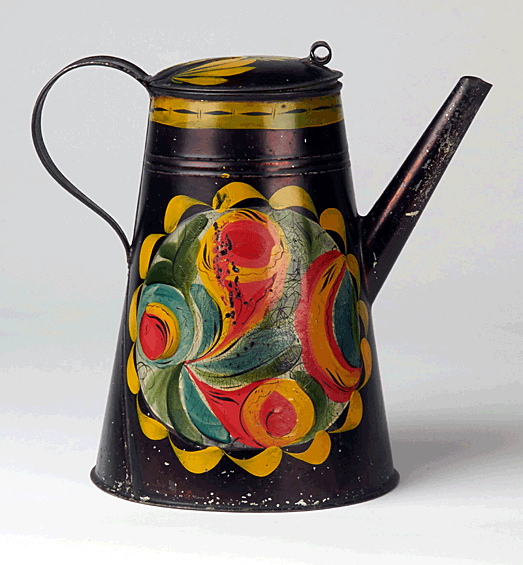 |
This
edition's
theme:
"Folk Art"
Volume 16 No. 1
This edition features
articles on antique and vintage folk art.

|
 |
|
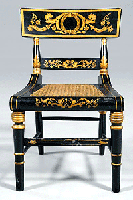 |
Folk Art Furniture on Parade
In
the 1960s, the trend was to strip antique furniture. Painted
furniture was out. Stripping down to the bare wood was the
norm in many cases. Gone were the colorful folk art motifs
that decorated many pieces. Unfortunately, with the
encouragement of articles in home decorating magazines,
people stripped, then repainted worn painted pieces, and
finally “antiqued” them using antiquing kits. Sounds
illogical, and it was.
More Antiques Articles |
|
 |
|
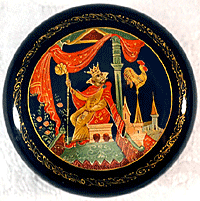 |
The
Luxurious Look of Russian Lacquer Boxes
Russian lacquer art developed from the art of icon painting
which came to an end with the collapse of Imperial Russia.
The icon painters, who previously had been employed by
supplying not only churches but people's homes, needed a way
to make a living. Thus, the craft of making papier-mache
decorative boxes developed. They lacquered the boxes, then
artists hand painted them, often with scenes from folk
tales, such as the tale of the Firebird, or of Prince Igor,
or of Swan Lake.
More
Special Features
|
|
 |
|
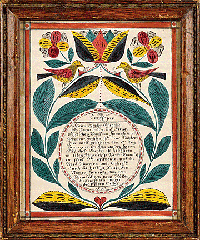 |
Fracturing Fraktur
Fraktur was a
highly artistic and elaborate illuminated folk art that
originated in Germany in the 18th century. Named for the
Fraktur script associated with it, it reached its peak
between 1740 and 1860.
More
Antique Spotlights
|
|
 |
|
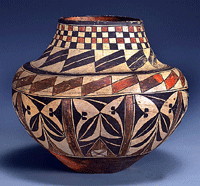 |
Collecting Folk Art
In the realm
of collecting antiques, there are a lot of cross-over
categories. One of these is folk art. Many see it as
primitive while others see it as a product of a specific
culture or community. Mexican Huichol beadwork is one
example. Tramp art is another. But what exactly fits in this
category and how does a person go about collecting it? The
types of folk art seems endless.
More
Collecting Articles
|
|
 |
Learn even
more about antiques with the oldest antiques site in
England.
 |
The
2023
Winter Edition
featuring
"Folk
Art"
is here
Go through the menu and read all the
New!
articles. |
|

|
|
A Collection That Defines Folk Art
by Bob Brooke
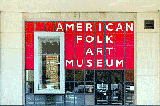
Folk art has been around since man first began drawing on
cave walls. It evolved out of necessity, from primitive
stone tools to baskets to carrying things to decorating
furniture to store things. The American Folk Art Museum New
York City presents an overview of folk art in America.
Read more.
|
|
 |
|
It's All in
the Pattern
by Bob Brooke
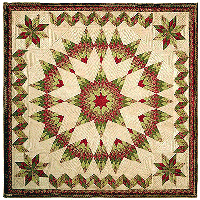
Quilts played a
major role in the trek west made by the pioneers. Women
prepared for their journey on the Oregon Trail for up to a
year before their departure. While the men took care of the
wagons, farm equipment, and animals, their wives prepared
and packed foodstuffs and household items. But above all,
they sewed quilts for bedding since travel guides to
westward emigration suggested that each family should bring
along two to three quilts for each person.
Read more |
|
 |
|
The Sweet Smell
of Sweet Grass
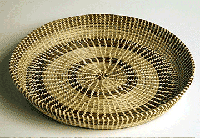
The story of South
Carolina's Low Country sweet-grass baskets begins centuries ago
on the rice farms of Africa. During the 15th and 16th centuries,
black men brought over to America as slaves made strong, sturdy
baskets out of bulrush, a coarse marsh grass that grew along the
tidal rivers of what’s today South Carolina. The baskets
winnowed rice, stored grain, and held vegetables collected from
the garden.
Read more |
|
How to Recognize and
Refinish Antiques for Pleasure and Profit
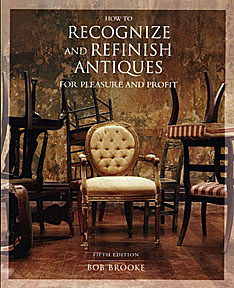
Have
you ever bought an antique or collectible that was less than perfect and
needed some TLC? Bob's book offers tips and step-by- step
instructions for simple maintenance and restoration of common antiques.
Read an
Excerpt |
|
BREAKING
NEWS
Treasures from the Deep
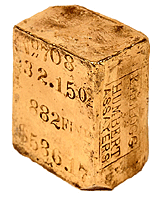
Thousands of
goldseekers ventured to California in hopes of getting rich.
Few did, at least not from mining gold. But a few did get
rich from the gold which they loaded onto the S.S. Central
America sailing to New York from Panana. |
|
Levine Folk Art Collection Carves Up Bonhams Skinner’s Block
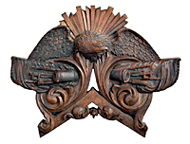
American History in Wood: The
Levine Folk Art Collection” in an online-only sale that
offered nearly 400 lots consisting of most of the collection
of Anne and Robert Levine. Decades in the making, the
Levine’s collection of exclusively wood carved objects had a
broad date span and depicted historical figures and events
that ranged from Leif Erikson’s arrival in Newfoundland to
the September 11 attacks on the World Trade Center.
|
 Like
us on Facebook Like
us on Facebook
 Follow
us on Twitter Follow
us on Twitter
 Follow on Instagram
Follow on Instagram |
|
Read
what our readers are saying about
The Antiques
Almanac
Comments

Send us your comment |
|
|
